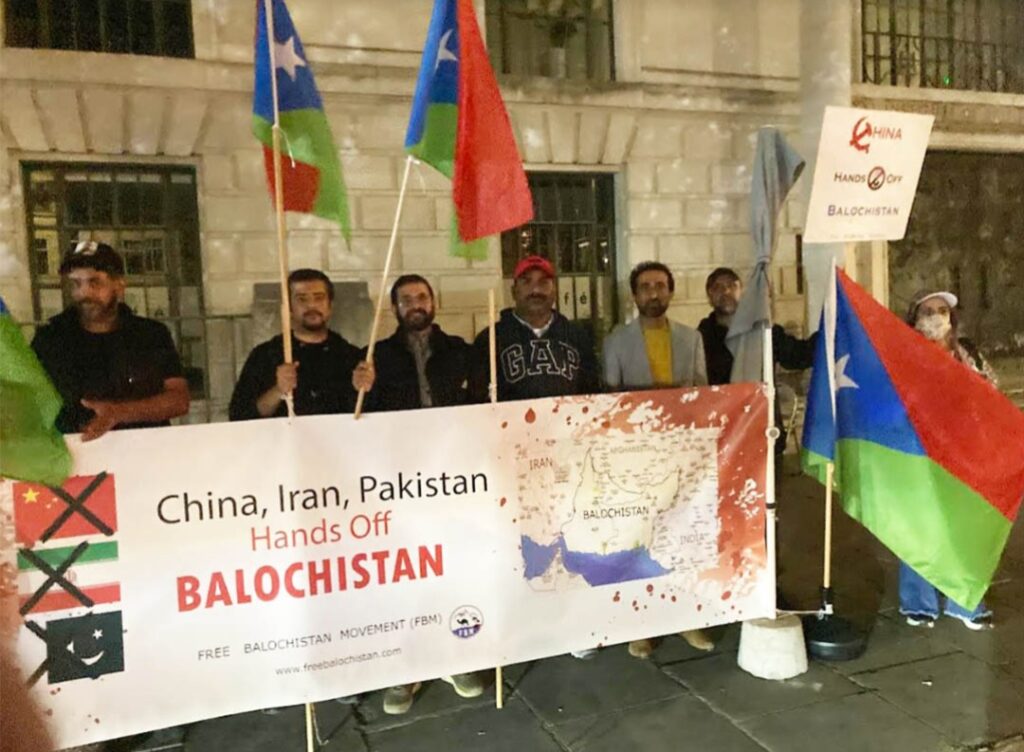By: Lt Col JS Sodhi (Retd), Editor, GSDN

Balochistan, Pakistan’s largest province, has increasingly become a battleground as pro-independence groups, particularly the Balochistan Liberation Army (BLA) and the Balochistan Liberation Front (BLF), escalate their attacks on Pakistani security forces and infrastructure. This surge in militant activity is a manifestation of long-standing grievances related to resource exploitation, political marginalization, and a fervent quest for autonomy that has characterized the region for decades.
In mid-December 2024, the BLA and BLF executed a series of coordinated attacks across various districts in Balochistan, strategically targeting military installations, logistical operations, and communication infrastructure. Notably, on December 15, BLA fighters assaulted a military post in Mirabad, resulting in the deaths of at least two soldiers and injuries to four others. The following day, they targeted a truck transporting minerals in Dukki, shooting its tyres and rendering it immobile while also destroying communication towers. Meanwhile, on December 16, BLF fighters attacked a military camp in Heronk, leading to one soldier’s death and injuries to two more. Additionally, earlier on December 13, the BLF executed Abdul Ghafoor, a military informant. These incidents reflect a broader strategy by both groups to disrupt state operations and assert their claims over Balochistan’s resources.
The roots of the conflict in Balochistan date back to its incorporation into Pakistan in 1948. Since then, various insurgent movements have emerged, fuelled by grievances over political representation and economic exploitation. The BLA and BLF have positioned themselves as key actors in this struggle for autonomy. The Pakistani government has historically been accused of neglecting Balochistan while extracting its rich natural resources such as coal, copper, gold, and oil without adequately compensating local communities. Reports indicate that between 2020 and 2024, at least 62 individuals working on projects under the China-Pakistan Economic Corridor (CPEC) were killed in various attacks across Pakistan. The BLA’s Majeed Brigade has been particularly active in targeting Chinese nationals associated with these projects.
Recent assessments indicate that the threat posed by Baloch separatist groups is escalating. A report from the Pakistan Institute for Peace Studies noted that the frequency of attacks attributed to the BLA reached alarming levels in November 2024, with 12 attacks resulting in 45 fatalities, more than those attributed to the Pakistani Taliban during the same period. This trend underscores a notable advancement in the operational capabilities of these groups.
The implications of these recent attacks are profound and multifaceted. Firstly, the human cost is significant; these assaults have not only resulted in military casualties but also threaten civilian lives, exacerbating an already precarious humanitarian situation in Balochistan. The ongoing violence disrupting communities and heightens fears among civilians who often find themselves caught between state forces and insurgents. Secondly, targeting communication infrastructure undermining state operations and hampers emergency services, isolating affected areas and making it difficult for security forces to respond effectively. Lastly, the psychological impact on security personnel is considerable; the increasing frequency of attacks creating immense pressure that leads to potential retaliatory actions against civilians as frustrated military forces grappling with their battlefield losses.
In response to this escalating violence, Pakistani authorities initiated “Operation Azm-i-Istehkam” aimed at countering separatist militant groups operating. However, this operation has largely failed to tackle the underlying issues fuelling unrest. Despite extensive military operations throughout 2024 attacks have continued unabated with minimal success reported against insurgent groups like the BLA and BLF. In fact, during just the first half of 2024 alone, the BLF claimed responsibility for 108 attacks resulting in 112 security personnel deaths a stark indication that military offensives have not effectively curbed insurgent activities or addressed local grievances.
According to partial data compiled by the South Asia Terrorism Portal (SATP), there were 72 incidents linked to the BLA recorded in 2024 alone that resulted in at least 253 fatalities, 55 civilians among them alongside significant losses among security forces (144 personnel). In contrast, during the same period in 2023, only 34 incidents resulted in just 69 fatalities overall.
Moreover, Pakistan has increasingly relied on Chinese military support to secure CPEC projects and counter threats from groups like the BLA and BLF. The Chinese government has provided not only financial investments but also military assistance aimed at bolstering Pakistani forces’ capabilities against insurgents. Reports suggest that Chinese security personnel have been deployed alongside Pakistani troops to protect critical infrastructure linked to CPEC initiatives.
Moreover, major operations conducted by these insurgent groups reveal their growing capabilities; for example, Operation Hereof carried out by the BLA involved coordinated attacks across seven districts on August 25-26, 2024. This operation resulted in at least 130 military personnel reported killed.
As Pakistan grapples with this escalating violence from separatist movements like the BLA and BLF while simultaneously managing international scrutiny over its human rights record regarding counterinsurgency operations against local populations the path forward remains fraught with challenges for Pakistan.


Thinker Pedia I very delighted to find this internet site on bing, just what I was searching for as well saved to fav
Very informative, analytical and accurate article.
My brother recommended I might like this web site He was totally right This post actually made my day You cannt imagine just how much time I had spent for this information Thanks
Noodlemagazine This was beautiful Admin. Thank you for your reflections.
gab Great information shared.. really enjoyed reading this post thank you author for sharing this post .. appreciated